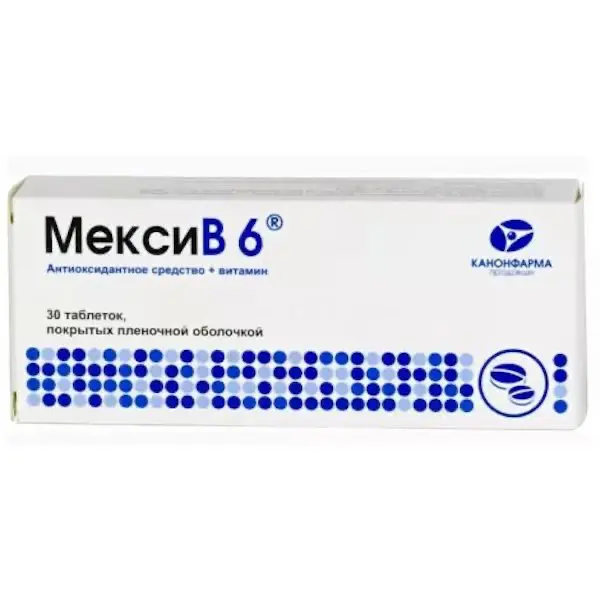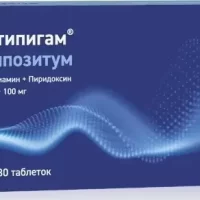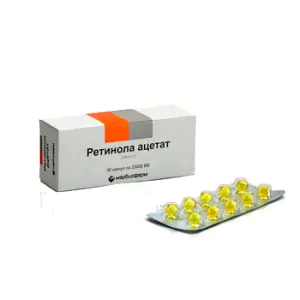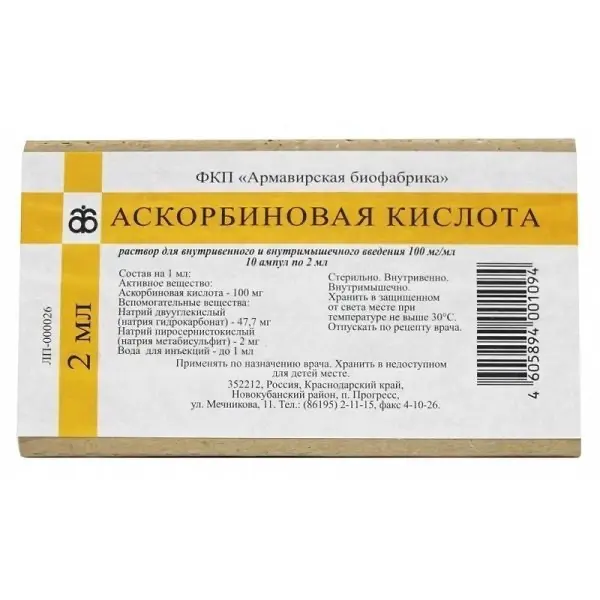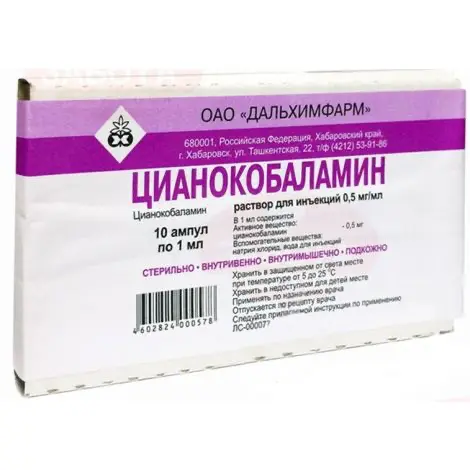Description
Mexico B6 Pharmacodynamics
Ethylmethylhydroxypyridine succinate inhibitor of free-radical processes – a membrane protector, which also has antihypoxic, stress-protective, nootropic, antiepileptic and anxiolytic action. Antioxidant drug that regulates metabolic processes in the myocardium and the vascular wall.
The mechanism of action is due to antioxidant and membrane-protective properties. It suppresses lipid peroxidation, increases superoxidase activity, increases lipid-protein ratio, improves cell membrane structure and function. Modulates the activity of membrane-bound enzymes, receptor complexes, which contributes to the preservation of structural and functional organization of biomembranes, transport of neurotransmitters and improves synaptic transmission. Increases the concentration of dopamine in the brain.
Enhances compensatory activation of aerobic glycolysis and reduces the degree of inhibition of oxidative processes in the Krebs cycle under hypoxia with an increase in adenosine triphosphoric acid (ATP) and creatine phosphate, activates the energy-synthesizing function of mitochondria.
Increases the body’s resistance to various damaging factors in pathological conditions (shock, hypoxia and ischemia, cerebral circulatory disorders, intoxication with ethanol and antipsychotic drugs).
Improves metabolism and blood supply to the brain, microcirculation and blood rheology, reduces platelet aggregation. It stabilizes blood cell membranes (erythrocytes and platelets), reducing the likelihood of hemolysis. It has a hypolipidemic effect, reduces the content of total cholesterol and low-density lipoproteins (LDL).
It improves the functional state of the ischemic myocardium, reducing manifestations of systolic and diastolic dysfunction of the left ventricle (LV), as well as electrical instability of the myocardium.
Under conditions of critical decrease of coronary blood flow, it contributes to preservation of structural and functional organization of cardiomyocyte membranes, stimulates the activity of membrane enzymes – phosphodiesterase, adenylate cyclase, acetylcholinesterase. It supports the activation of aerobic glycolysis developing in acute ischemia and promotes under hypoxia the restoration of mitochondrial redox processes, increases the synthesis of adenosine triphosphoric acid (ATP), creatine phosphate and other macroergens. It increases collateral blood supply of ischemic myocardium and activates energy-synthesizing processes in the ischemic zone, which helps to preserve the integrity of cardiomyocytes and maintain their functional activity.
In patients with stable angina increases exercise tolerance and antianginal activity of nitrates, improves blood rheological properties, reduces the incidence of acute coronary insufficiency.
Pyridoxine entering the body is phosphorylated, converted into pyridoxal-5-phosphate, and is part of the enzymes that carry out decarboxylation, transamination and racemization of amino acids, as well as the enzymatic conversion of sulfur-containing and hydroxylated amino acids. It participates in metabolism and is necessary for normal functioning of the central and peripheral nervous system. Pyridoxine is involved in the metabolism of tryptophan, methionine, cysteine, glutamic and other amino acids. It plays an important role in the metabolism of histamine. Contributes to the normalization of lipid metabolism.
Indications
As part of the combined therapy:
– dyscirculatory encephalopathy;
– vegetative dystonia syndrome;
– Anxiety in neurotic and neurosis-like conditions;
– withdrawal syndrome in alcoholism with predominance of neurosis-like and vegetovascular disorders;
– Coronary heart disease (prevention of attacks);
– conditions after acute intoxication with antipsychotic drugs;
– asthenic conditions, as well as for the prevention of the development of somatic diseases under the influence of extreme factors and stress;
– Effects of extreme (stressor) factors.
Contraindications .
– Hypersensitivity;
– acute hepatic and/or renal failure;
– Pregnancy, lactation;
– Childhood.
With caution:
Peptic ulcer and 12 duodenal ulcer.
Dosage and administration.
- Inside, 1 tablet 3 times a day, the initial dose of 1-2 tablets 1-2 times a day with a gradual increase to a therapeutic effect. The maximum daily dose of 6 tablets / day.
- Duration of treatment is 2 to 8 weeks. If necessary, repeated courses are possible.

